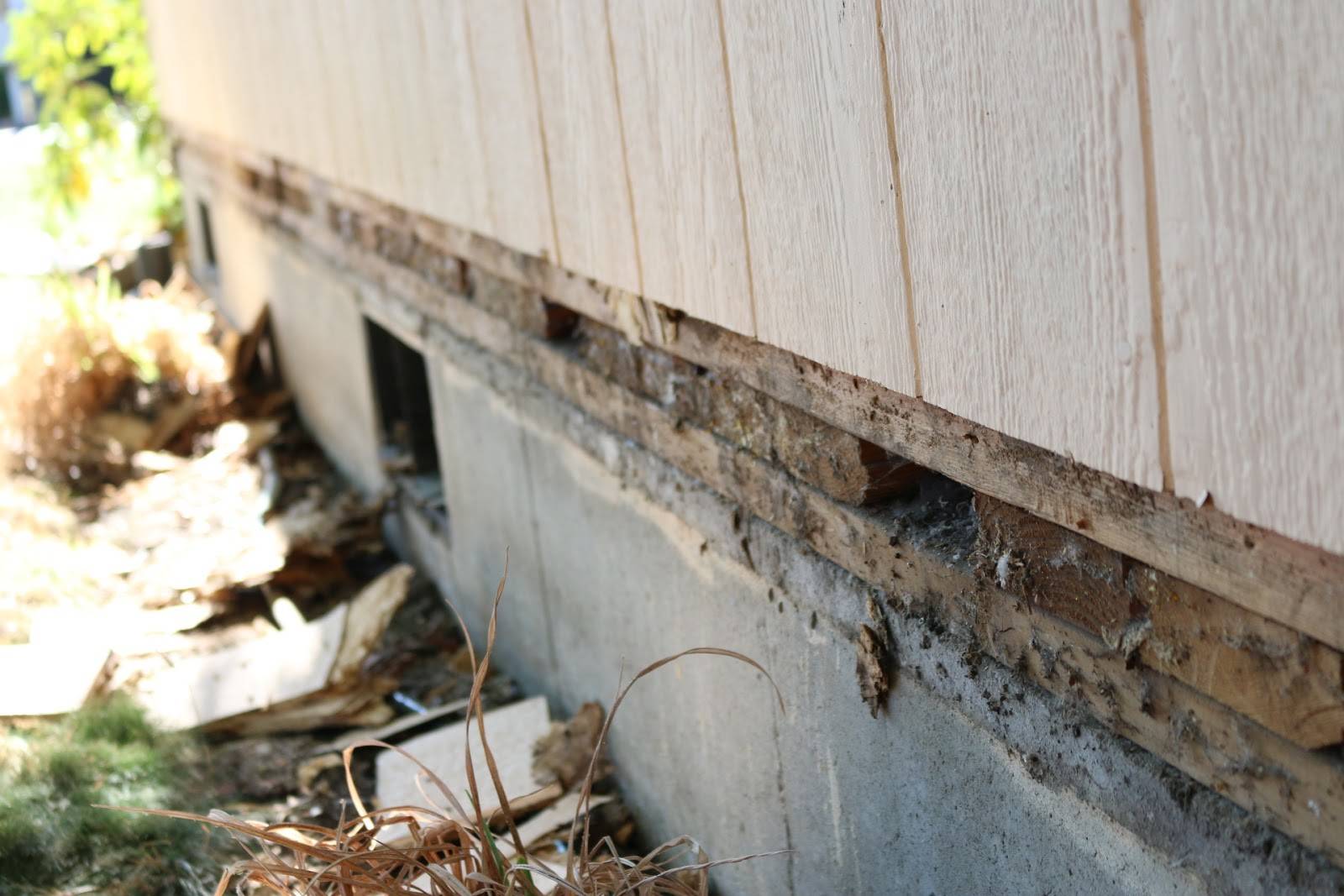Home>Home Maintenance>How To Contest Insurance For Home Repair


Home Maintenance
How To Contest Insurance For Home Repair
Modified: March 6, 2024
Learn how to contest insurance claims and get the necessary coverage for home repair. Discover effective tips and strategies for navigating the insurance process to ensure your home maintenance needs are met.
(Many of the links in this article redirect to a specific reviewed product. Your purchase of these products through affiliate links helps to generate commission for Storables.com, at no extra cost. Learn more)
Introduction
Welcome to the world of home maintenance, where unexpected repairs and damages are an inevitable part of life. While it’s important to keep your home well-maintained and avoid any major issues, sometimes accidents happen, leaving you with the daunting task of dealing with insurance companies to contest the cost of repairs.
Contesting insurance claims for home repairs can be a complex process, but with the right knowledge and preparation, you can navigate through it successfully. In this article, we’ll guide you through the steps to contest insurance for home repairs, ensuring that you get the support you need to restore your home to its former glory.
It’s crucial to understand that every insurance policy is different, so be sure to review the specific terms and conditions of your policy before proceeding. The information provided in this article is intended to provide general guidance and may not apply to your specific situation.
So, without further ado, let’s dive into the world of insurance coverage and learn how to contest insurance claims for home repairs.
Key Takeaways:
- Contesting insurance claims for home repairs requires understanding your policy, documenting damages thoroughly, and effectively communicating with insurance adjusters to ensure fair reimbursement.
- Seeking legal assistance can provide expertise, negotiation skills, and peace of mind when contesting a denial of an insurance claim for home repairs.
Read more: What Is Home Life Insurance
Understanding Insurance Coverage for Home Repairs
Before you can effectively contest an insurance claim for home repairs, it’s essential to have a clear understanding of your insurance coverage. Home insurance typically provides coverage for a variety of perils such as fire, storms, vandalism, and theft. However, coverage for specific repairs and damages may vary depending on your policy.
First and foremost, review your policy to determine what types of damages are covered. Most policies will cover structural damage caused by covered perils, such as a burst pipe or a fallen tree damaging your roof. Additionally, your policy may also include coverage for personal property inside your home, such as furniture, appliances, and electronics.
It’s important to note that insurance coverage may have certain limitations and exclusions. For example, your policy may exclude coverage for damages caused by normal wear and tear, neglect, or pre-existing conditions. You may also have separate coverage for specific items, such as expensive jewelry or artwork, which may require additional riders or endorsements.
Additionally, insurance policies often have deductibles, which are the out-of-pocket expenses you must pay before your insurance coverage kicks in. Familiarize yourself with your deductible amount and be prepared to pay it when filing a claim.
Understanding your insurance coverage is crucial when contesting an insurance claim. It allows you to determine if the damages you’re dealing with are covered under your policy or fall within the exclusions. If you’re unsure about any aspect of your coverage, don’t hesitate to reach out to your insurance agent or company for clarification.
Now that you have a basic understanding of insurance coverage for home repairs, let’s move on to the next step: assessing the damage.
Assessing the Damage
Once you’ve determined that the damages you’ve experienced are covered under your insurance policy, it’s time to assess the extent of the damage. This step is crucial not only for accurately filing your insurance claim but also for having a clear understanding of the repairs that need to be done.
Start by conducting a thorough inspection of your property. Carefully examine each affected area, taking note of any visible damage. This can include anything from broken windows and damaged walls to waterlogged floors and compromised structural components.
It’s important to document the damage you observe. Take detailed photographs and videos of each affected area from multiple angles. This visual evidence will not only support your insurance claim but also provide a clear picture of the extent of the damage.
In addition to visual assessment, be sure to make a list of all damaged items and their estimated value. This includes personal belongings, furniture, appliances, and any other items that have been affected by the incident. Itemizing the damage will help ensure that you’re compensated accurately for the loss.
If the damage is severe or poses a safety risk, consider contacting professionals such as contractors or restoration experts. They can provide a more in-depth assessment of the damage and help determine the scope of repairs needed to restore your home.
Keep in mind that insurance companies may send their own adjuster to assess the damage. While their assessment is important, it’s recommended to have your own documentation as evidence to support your claim. This way, you’ll have a comprehensive view of the damage and can contest any discrepancies that may arise during the claim process.
With a thorough assessment of the damage in hand, you’re now ready to move forward with filing a claim with your insurance company. In the next section, we’ll explore the steps to take when filing a claim and how to effectively communicate with your insurance company.
Documenting the Loss
When it comes to contesting an insurance claim for home repairs, having thorough documentation of the loss is absolutely crucial. This documentation serves as vital evidence to support your claim and ensure that you receive the appropriate compensation for the damages you’ve incurred.
Start by creating a detailed inventory of all the damaged items. This includes both structural damage and personal belongings. Make a list of each item, along with its estimated value and any relevant details such as brand, model, and purchase date. This inventory will help you keep track of the items you’re claiming and provide concrete evidence to support your claim.
Next, gather any receipts, invoices, or other proof of purchase for the damaged items. This documentation is essential in proving the value of your possessions and establishing their pre-loss condition.
When it comes to structural damage, document the repairs that are necessary to restore your home. This can include obtaining estimates from contractors or professionals in the industry. Make sure to keep any written estimates or quotes, as well as their contact information, for future reference.
In addition to written documentation, it’s important to capture visual evidence of the damage. Take photographs or videos of each affected area, focusing on specific details that highlight the extent of the damage. Capture close-up shots as well as wider shots to provide context.
If there are any temporary repairs that are necessary to prevent further damage or ensure safety, document those as well. Keep track of the expenses incurred for these temporary repairs, as they may be covered under your policy.
Throughout the entire process of documenting the loss, it’s crucial to stay organized. Keep all the relevant paperwork, receipts, photographs, and estimates in a safe place. Consider creating digital backups of all your documentation to ensure that you have multiple copies in the event of loss or damage.
By thoroughly documenting the loss, you are providing strong evidence that supports your claim and increases your chances of successfully contesting the insurance company’s evaluation. With this documentation in hand, you can confidently proceed with filing a claim and communicating with your insurance company.
In the next section, we will delve deeper into how to review and understand your insurance policy in order to effectively navigate the claim process.
Reviewing and Understanding Your Policy
When it comes to contesting an insurance claim for home repairs, it’s crucial to have a solid understanding of your insurance policy. This will help you navigate the claims process with confidence and ensure that you receive the maximum coverage for your damages.
Start by obtaining a copy of your insurance policy and carefully reviewing it. Pay close attention to the coverage limits, deductibles, exclusions, and any specific provisions that may apply to your claim.
Take note of the specific language used in your policy. Insurance policies can often be filled with technical terms and industry jargon. If you come across any terms that are unclear, consult with your insurance agent or company for clarification. It’s important to have a clear understanding of the terms and conditions outlined in your policy, as they will guide your interactions with the insurance company.
Pay particular attention to the coverage limits for the specific types of damages you’re claiming. Make sure you understand how much coverage you have for structural damage and personal property. Additionally, be aware of any sub-limits or separate deductibles that may apply to certain types of losses, such as water damage or mold remediation.
Review the exclusions section of your policy. This lists the specific circumstances or events that are not covered by your insurance. Understanding the exclusions is essential in determining if your claim falls within the covered perils or if there are any limitations to your coverage.
If you come across any discrepancies or inconsistencies in your policy, notify your insurance company immediately. Request written clarification on any ambiguous terms or provisions to ensure that you have a clear understanding of your coverage.
In addition to understanding your policy, familiarize yourself with the claims process outlined by your insurance company. Take note of the deadlines for filing a claim and providing supporting documentation. Being aware of these timelines will help you stay organized and ensure that you fulfill all the necessary requirements in a timely manner.
Overall, reviewing and understanding your insurance policy is a critical step in contesting an insurance claim for home repairs. It allows you to know your rights, understand your coverage, and advocate for yourself effectively. Armed with this knowledge, you can confidently move forward with filing a claim and dealing with your insurance company.
Next, we will explore the process of filing a claim with your insurance company and gathering the necessary documentation to support your case.
Read more: What Are Insurance Home Protection Plans
Filing a Claim with Your Insurance Company
When it comes to contesting an insurance claim for home repairs, filing a claim with your insurance company is the first step in the process. This involves formally notifying your insurance provider about the damages you’ve incurred and requesting reimbursement for the repairs.
Start by contacting your insurance company as soon as possible after the incident. Many insurance companies have specific deadlines for filing claims, so it’s important to act swiftly. Provide them with all the necessary details about the damage, including the date of the incident, a description of what happened, and the extent of the damages.
During this initial contact, ask your insurance company for specific instructions on how to proceed with the claim. They will guide you through the process and may provide you with the necessary forms to fill out. Follow their instructions carefully, as any errors or omissions may delay the processing of your claim.
When filling out the claim forms, be thorough and accurate. Provide as much detail as possible regarding the damages, the items affected, and any injuries or safety concerns that resulted from the incident. Attach any supporting documentation, such as photographs, videos, receipts, and estimates, to strengthen your claim.
Keep a record of all communications with your insurance company, including the dates and times of phone calls, the names of the representatives you’ve spoken with, and the content of the conversations. This documentation can be crucial in case there are any disputes or discrepancies later in the process.
Once you’ve submitted your claim, your insurance company will assign an adjuster to evaluate the damages. The adjuster will assess the extent of the damage, review your documentation, and determine the amount of coverage you’re eligible for.
Be prepared for the possibility that the insurance company’s initial assessment may not fully cover the cost of repairs. This is where the documentation you’ve gathered becomes invaluable. If you believe their initial offer is inadequate, you can contest it by providing additional evidence and supporting information that justifies a higher reimbursement amount.
Throughout the claims process, it’s important to maintain open and clear communication with your insurance company. Respond promptly to any requests for additional information or documentation, and follow up regularly to ensure that your claim is progressing smoothly.
With your claim filed, you can now focus on gathering any additional supporting documentation that may be required. In the next section, we will discuss the importance of thorough documentation when contesting a claim and working with insurance adjusters.
When contesting insurance for home repair, document all damages with photos and videos, gather repair estimates, and keep all communication with the insurance company in writing.
Gathering Supporting Documentation
When contesting an insurance claim for home repairs, having thorough and accurate documentation is crucial to support your case. The more supporting evidence you have, the stronger your position will be when negotiating with your insurance company. Here are some essential documents and information to gather:
1. Incident Report: If applicable, obtain an incident report or police report that documents the details of the event that caused the damage. This report can be valuable evidence in substantiating the cause of the damage.
2. Photos and Videos: Take clear, detailed photographs and videos of the damage to your property. Capture multiple angles and close-ups to clearly document the extent of the damage. Include any visible signs of the cause of the damage.
3. Itemized Inventory: Create an itemized list of all damaged items, including furniture, electronics, appliances, and personal belongings. Include details such as brand, model, age, and a brief description of each item. If possible, provide receipts, invoices, or appraisals to establish their value.
4. Estimates and Quotes: Obtain repair estimates from reputable contractors or professionals in the industry. These estimates should detail the scope of work required and the associated costs. Having multiple estimates can strengthen your case and provide a basis for negotiations.
5. Receipts and Invoices: Gather receipts and invoices for any emergency repairs or mitigation measures you’ve taken to prevent further damage. This includes expenses for temporary repairs, such as tarping a roof or boarding up broken windows.
6. Maintenance Records: If the damage is a result of a maintenance-related issue or a long-standing problem, provide any maintenance records or documentation that show you have diligently cared for your property. This can help counter any claims of negligence or lack of proper maintenance.
7. Insurance Policy: Keep a copy of your insurance policy readily available, as it contains the terms, coverage limits, and exclusions that apply to your claim. Referencing your policy during discussions with your insurance company will help ensure that you’re knowledgeable about your rights and coverage.
8. Correspondence with the Insurance Company: Maintain a record of all communications with your insurance company, including emails, letters, and phone call notes. This documentation will help keep track of important discussions, requests for information, and any promises or commitments made by the insurance company.
9. Medical Records: If the incident causing the damage resulted in injuries requiring medical treatment, keep copies of medical records and bills. These records can further substantiate the impact of the incident and any additional expenses incurred as a result.
By gathering this supporting documentation, you provide clear and compelling evidence to support your insurance claim. It strengthens your case, demonstrates the extent of the damage, and justifies the reimbursement you are seeking.
In the next section, we will delve into the process of working with insurance adjusters and the importance of effective communication during the claims process.
Working with Insurance Adjusters
When contesting an insurance claim for home repairs, you’ll likely interact with an insurance adjuster. An insurance adjuster is an individual employed by the insurance company who assesses the damages, determines the value of your claim, and negotiates the settlement on behalf of the company. Here are some tips for effectively working with insurance adjusters:
1. Be Prepared: Before meeting with the insurance adjuster, gather all the necessary documentation, including photographs, repair estimates, invoices, and any other evidence to support your claim. Being prepared helps you present a strong and well-documented case.
2. Document Everything: Take detailed notes of all interactions with the adjuster. Include the date, time, and a summary of the conversation. Follow up any phone calls or in-person meetings with an email that outlines the key points discussed to create a paper trail and avoid misunderstandings.
3. Provide Clear and Concise Information: When communicating with the adjuster, be clear and specific about the damages and repairs needed. Avoid unnecessary details or unrelated information that may distract from the main issue at hand.
4. Be Honest and Transparent: Provide factual and honest information about the damages. Avoid exaggerating or embellishing the extent of the damage as it may undermine your credibility. Stick to the facts and let the documentation speak for itself.
5. Ask Questions and Seek Clarification: If there’s anything you don’t understand or need clarification on, don’t hesitate to ask the adjuster. It’s essential to have a clear understanding of the assessment process, the coverage offered by your policy, and the settlement calculations.
6. Challenge Inaccurate Assessments: If you disagree with the adjuster’s assessment or the proposed settlement amount, respectfully challenge it. Use your documentation and any expert opinions or estimates you’ve obtained to support your position. Provide a clear and logical argument for why you believe the initial assessment is incorrect.
7. Be Persistent: If you encounter challenges or delays in the claim process, don’t give up. Follow up regularly with the adjuster and the insurance company to ensure that your claim is progressing. Be persistent in seeking a fair and reasonable settlement for the damages you’ve incurred.
8. Consider Seeking Professional Help: If you feel overwhelmed or the negotiations with the adjuster are not progressing in your favor, you may want to consult with a public adjuster or an attorney who specializes in insurance claims. They can provide expert guidance and advocate for your rights throughout the process.
Remember, the role of the insurance adjuster is to represent the interests of the insurance company. While they may be professional and courteous, their primary goal is to minimize the amount the company pays for your claim. By understanding the process and effectively communicating your case, you can navigate the claim process more confidently and increase the likelihood of a fair settlement.
In the next section, we will explore the importance of getting multiple estimates for your repairs and how they can support your claim.
Getting Multiple Estimates
When contesting an insurance claim for home repairs, obtaining multiple estimates is a crucial step in supporting your case and ensuring that you receive fair compensation. Multiple estimates provide an objective assessment of the damages and the associated repair costs, adding credibility to your claim. Here’s why getting multiple estimates is important:
1. Comparison of Costs: By obtaining several estimates from different contractors or professionals, you can compare the costs and determine a reasonable range for the repairs. This allows you to identify any significant discrepancies and question any excessively high or low estimates provided by the insurance adjuster.
2. Documentation of Damages: Each contractor or professional who provides an estimate will document the necessary repairs and the scope of work involved. These details can serve as additional evidence to support your claim and demonstrate the accurate assessment of the damages.
3. Expert Opinions: Contractors or professionals in the industry have specialized knowledge and experience in assessing and repairing specific types of damages. Their expertise can provide valuable insights and help substantiate the extent of the damages, ensuring that you are not undercompensated by the insurance company.
4. Negotiation Support: Having multiple estimates gives you leverage during the negotiation process. If the insurance adjuster presents an initial settlement that does not align with the estimates you’ve obtained, you can use the documentation as evidence to support your claim for a higher reimbursement amount.
5. Choice of Contractor: By obtaining multiple estimates, you have the opportunity to evaluate different contractors and their proposed repair approaches. This allows you to select a contractor who best meets your needs, has a good reputation, and is experienced in handling the specific repairs required for your property.
6. Protecting Yourself from Lowball Offers: Some insurance adjusters may provide low initial settlement offers in the hope that you’ll accept them without further negotiation. By having multiple estimates, you can demonstrate the true cost of the repairs, preventing the insurance company from offering an inadequate settlement.
When seeking multiple estimates, ensure that the contractors or professionals you approach are reputable, licensed, and experienced in the type of repairs needed. Ask for references, review their past work, and read customer reviews to ensure their credibility and reliability.
Be prepared to share the estimates with your insurance company. Provide copies of each estimate along with the corresponding documentation, such as photographs, repair descriptions, and any other supporting evidence. The more comprehensive your documentation, the stronger your case will be when contesting the insurance company’s settlement offer.
By obtaining multiple estimates, you obtain a well-rounded view of the costs and scope of work needed for the repairs. This information empowers you to advocate for the appropriate compensation for the damages you’ve incurred and ensures that you receive a fair settlement from your insurance company.
In the next section, we will explore the process and steps to take when contesting a denial of an insurance claim.
Contesting Denial of Insurance Claim
Discovering that your insurance claim has been denied can be disheartening, but it’s important to remember that denials are not the final word. If your insurance claim for home repairs has been denied, you have options to contest the decision. Here are the steps to take when contesting a denial of an insurance claim:
1. Review the Denial Letter: Carefully read through the denial letter provided by your insurance company. Understand the specific reasons outlined for the denial, including any policy exclusions or limitations that were cited. This will help you address the specific issues raised when presenting your case.
2. Gather Supporting Documentation: Compile all the supporting documentation related to your claim, including photographs, videos, estimates, and any expert opinions or reports. These documents will serve as evidence to counter the reasons for denial and strengthen your case.
3. Understand your Policy: Review your insurance policy in detail to ensure that the claim for the damages falls within the coverage. If the denial is based on an incorrect interpretation of the policy or a misapplication of the policy terms, you can challenge the denial by providing a clear explanation backed by the policy language.
4. Consult with a Professional: Consider reaching out to a public adjuster or an attorney who specializes in insurance claims. They have specific expertise in the field and can provide guidance on how to contest the denial effectively. They can also negotiate with the insurance company on your behalf, increasing your chances of a successful appeal.
5. Draft an Appeal Letter: Write a well-crafted appeal letter addressed to the insurance company. Clearly articulate why you believe the denial is incorrect and present all the supporting documentation you’ve gathered. Be concise, but provide sufficient detail to support your argument and counter any concerns raised in the denial letter.
6. Follow Up Regularly: Keep a record of all communication with the insurance company regarding your appeal. Follow up regularly to ensure that your case is being reviewed and to request updates on the status of your appeal. Maintain a professional and persistent approach throughout the process.
7. Consider Mediation or Arbitration: If the insurance company continues to deny your claim after the appeal, you may consider mediation or arbitration. These processes involve a neutral third party who can help facilitate a resolution between you and the insurance company. Consult with your attorney on the best course of action for your situation.
8. Know your Rights: Familiarize yourself with your state’s insurance regulations and consumer rights. This knowledge can protect you and ensure that you are being treated fairly throughout the claims process. If you believe your rights have been violated, you may consider filing a complaint with your state’s insurance regulatory authority.
Remember, contesting a denial of an insurance claim requires patience and persistence. Be prepared to engage in negotiations and provide additional information as needed. By presenting a compelling case based on solid evidence and a clear understanding of your policy, you increase your chances of a successful appeal.
In the face of a denial, it can be helpful to consult with professionals who can guide you through the process and advocate for your rights. They can leverage their knowledge and expertise to effectively communicate with the insurance company and work towards a favorable resolution.
In the next section, we will discuss the option of seeking legal assistance to contest an insurance claim denial.
Seeking Legal Assistance
When contesting a denial of an insurance claim for home repairs, seeking legal assistance can be a valuable option. An attorney who specializes in insurance claims can provide expert guidance, navigate complex legal processes, and advocate for your rights. Here’s why seeking legal assistance may be beneficial:
1. Expertise in Insurance Law: Insurance policies are complex legal documents, and understanding the intricacies of insurance law can be challenging. An attorney familiar with insurance law can analyze your policy, identify potential legal issues, and guide you on how to navigate them effectively.
2. Strategic Advice: A skilled attorney can provide strategic advice on the best course of action to contest the denial. They can assess the strength of your case, identify potential legal arguments, and advise you on the most effective approach to maximize your chances of a successful appeal.
3. Negotiation Skills: Insurance companies often have experienced claims adjusters and legal teams working to protect their interests. Having an attorney on your side can level the playing field. They can negotiate with the insurance company on your behalf, advocating for fair treatment and a favorable resolution.
4. Evidence Collection and Analysis: Attorneys have the resources and knowledge to collect and analyze evidence relevant to your claim. They can identify any gaps or weaknesses in your documentation, and work with you to gather the necessary evidence to strengthen your case.
5. Legal Representation in Disputes: If your claim proceeds to more formal dispute resolution processes, such as mediation, arbitration, or even litigation, an attorney can provide representation and guidance throughout the process. They can present your case in a persuasive manner and protect your rights during negotiations or in a court of law.
6. Efficient Handling of Legal Procedures: Insurance claims processes can involve various legal procedures, such as filing motions, complying with deadlines, and navigating legal requirements. An attorney can handle these procedures efficiently, ensuring that all necessary legal steps are followed correctly and on time.
7. Peace of Mind: Dealing with a denied insurance claim is already stressful. Having a competent attorney by your side can provide peace of mind, knowing that you have a knowledgeable ally who is working diligently to protect your interests and pursue a favorable outcome.
When seeking legal assistance, choose an attorney with expertise in insurance claims and a track record of success in similar cases. Consultations are often offered free of charge, allowing you to discuss your case and assess whether the attorney is the right fit for your needs.
Keep in mind that hiring an attorney does come with costs. Some attorneys work on a contingency fee basis, meaning they only receive payment if they successfully recover funds for you. Others may charge an hourly rate or a flat fee. Discuss the fee structure with the attorney during your initial consultation to ensure clarity and avoid any surprises.
Remember, seeking legal assistance can provide you with the expertise and support needed to navigate the complexities of contesting an insurance claim denial. With their guidance, you can present a strong case and increase your chances of a favorable outcome.
In the final section, we will conclude with a summary of the key points discussed throughout the article.
Conclusion
Contesting an insurance claim for home repairs can be a complex and challenging process, but armed with knowledge and preparation, you can navigate through it successfully. Throughout this article, we have explored the steps and strategies involved in contesting insurance claims for home repairs.
We started by emphasizing the importance of understanding your insurance coverage and reviewing your policy in detail. This understanding forms the foundation for contesting a claim and ensures that you know your rights and the scope of your coverage.
We then discussed the importance of assessing and documenting the damage accurately. Thorough documentation, including photographs, videos, and itemized lists of damaged items, provides strong evidence to support your claim and increases your chances of a fair settlement.
Filing a claim with your insurance company was the next step we examined. We explored the process of notifying your insurance company about the damages, filling out claim forms, and providing all necessary documentation to support your case.
We also discussed the significance of working with insurance adjusters. Understanding their role, maintaining clear and effective communication, and challenging inaccurate assessments are key to advocating for your rightful reimbursement.
Getting multiple estimates from reputable contractors and professionals was highlighted as an important step. These estimates serve as objective assessments of the damages and their associated costs, providing a basis for negotiating a fair settlement.
In the unfortunate event that your claim is denied, we provided guidance on contesting the denial. Reviewing the denial letter, gathering supporting documentation, understanding your policy, and seeking legal assistance are effective strategies to challenge the denial and fight for your rightful coverage.
Finally, we discussed the option of seeking legal assistance. An attorney with expertise in insurance claims can provide invaluable guidance, navigate legal processes, and advocate for your rights to ensure that you receive a fair settlement.
Remember, the process of contesting an insurance claim for home repairs requires patience, persistence, and thorough documentation. By understanding your policy, gathering evidence, and effectively communicating your case, you can increase your chances of a successful claim and restore your home to its former state.
Although every situation is unique, we hope that the information provided in this article has equipped you with the knowledge and confidence to tackle the challenges that may arise when contesting an insurance claim for home repairs.
Frequently Asked Questions about How To Contest Insurance For Home Repair
Was this page helpful?
At Storables.com, we guarantee accurate and reliable information. Our content, validated by Expert Board Contributors, is crafted following stringent Editorial Policies. We're committed to providing you with well-researched, expert-backed insights for all your informational needs.













